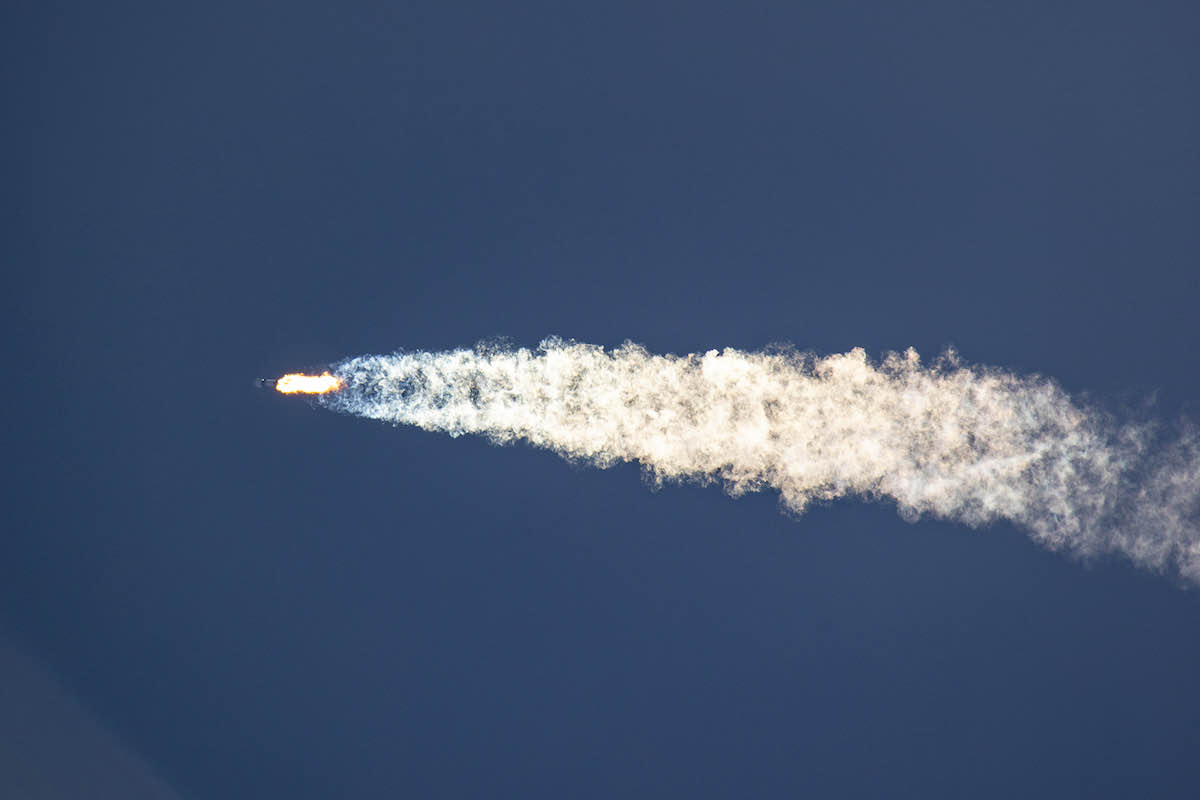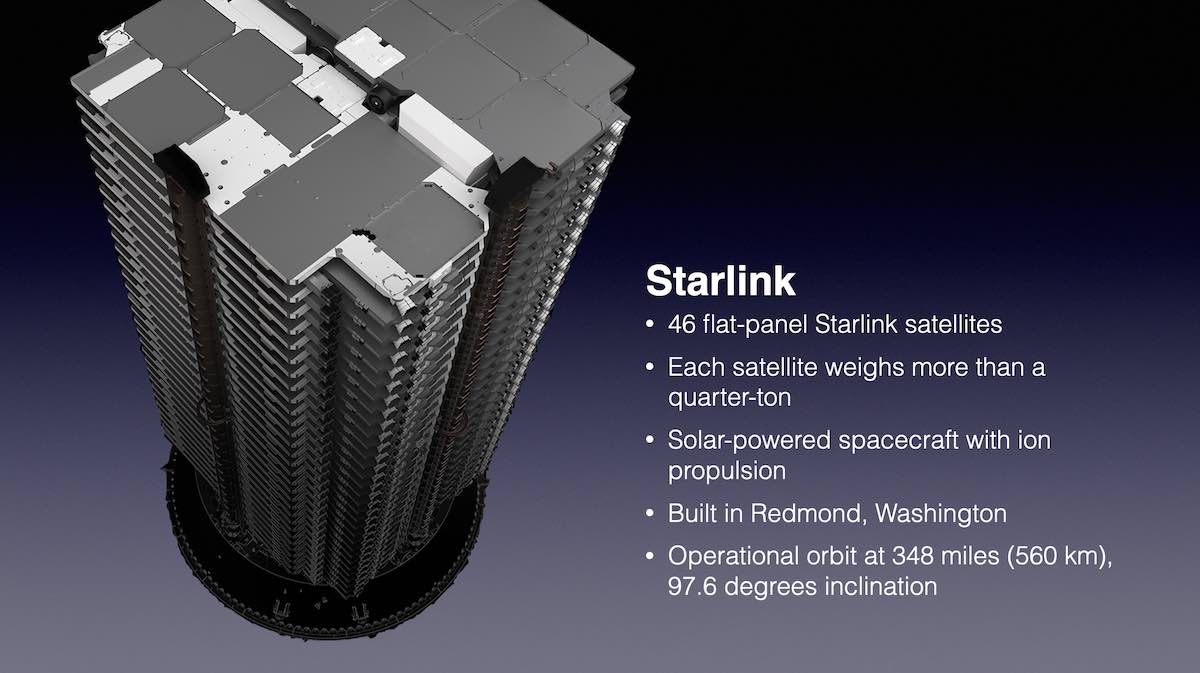
SpaceX launched 46 more Starlink internet satellites on a Falcon 9 rocket Friday from Vandenberg Space Force Base in California, adding more broadband relay platforms to the polar-orbiting segment of the network.
The 229-foot-tall (70-meter) Falcon 9 rocket lifted off from Space Launch Complex 4-East at Vandenberg at 2:40:20 p.m. PDT (5:40:20 p.m. EDT; 2140:20 GMT) with the 46 Starlink satellites flat-packed inside the launcher’s payload shroud.
The two-stage, liquid-fueled launcher headed south from Vandenberg, a military spaceport about 140 miles (225 kilometers) northwest of Los Angeles, targeting an orbital altitude between 191 miles and 199 miles (308-by-321 kilometers) at an inclination of 97.6 degrees to the equator.
Liftoff of SpaceX’s Falcon 9 rocket from the Central Coast of California, hauling 46 more Starlink internet satellites into polar orbit. https://t.co/QJrKPOB7g8 pic.twitter.com/OdGj5ahnkf
— Spaceflight Now (@SpaceflightNow) August 12, 2022
Soaring through a sunny sky over California’s Central Coast, the Falcon 9 surpassed the speed of sound in about one minute, powered by nine Merlin 1D engines consuming a mix of kerosene and liquid oxygen propellants. The nine engines produced about 1.7 million pounds of thrust at full throttle.
The rocket fired its first stage engines for two-and-a-half minutes to propel the stack of Starlink satellites toward space. A single Merlin engine on the Falcon 9’s upper stage then took over the flight to inject the payloads into orbit as the first stage descended toward SpaceX’s drone ship “Of Course I Still Love You” positioned a few hundred miles downrange in the Pacific Ocean.
The 15-story-tall booster used cold gas thrusters and titanium grid fins to control its hypersonic re-entry into the atmosphere. Four landing legs extended from the base of the rocket as the booster’s center engine performed the final braking maneuver for the vertical touchdown on the recovery vessel about eight-and-a-half minutes after liftoff.

The booster flying that flew Friday, known as tail number B1061, made its 10th trip to space. The booster debuted Nov. 15, 2020, with the launch of NASA’s Crew-1 mission carrying a team of four astronauts to the International Space Station. Booster No. 1061’s launch Friday was its first mission from Vandenberg, following nine prior flights from the Kennedy Space Center or Cape Canaveral Space Force Station in Florida.
The payload fairing on Friday’s mission was also reused from previous missions. Both halves of the clamshell-like nose cone were flying for the fourth time, and a SpaceX recovery team was on station in the Pacific Ocean to retrieve the fairing shells after parachuting into the sea.
While SpaceX’s recovery teams retrieved the booster and fairing halves, the Falcon 9’s single-use upper stage delivered the 46 Starlink satellites into an on-target orbit for deployment using two burns by its Merlin engine. That set the stage for separation of the 46 Starlink satellites about 63 minutes into the mission.
SpaceX waited a few minutes to confirm the deployment event until the rocket flew in range of a ground station at Svalbard in the Arctic Ocean.

After separating from the Falcon 9, the Starlink satellites were expected to disperse and extend solar panels to begin generating electricity to recharge their batteries. The satellites will go through an automated checkout and activation sequence, then use krypton-fueled ion thrusters to raise their altitude to 348 miles (560 kilometers), where they will enter operational service in the Starlink network.
The Starlink satellites each weigh more than a quarter-ton, and are built on SpaceX’s Starlink assembly line in Redmond, Washington. The spacecraft are fitted with laser inter-satellite links to facilitate data transfers in orbit, without needing to relay signals through ground stations, which come with geographical, and sometimes political, constraints. Laser crosslinks can also reduce latency in the Starlink network because signals need to travel a shorter distance.
SpaceX’s Starlink network provides low-latency broadband internet service to consumers around the world. The fleet is the largest constellation of satellites in orbit, with 2,287 Starlink spacecraft currently in service, and 444 more satellites raising their orbits or drifting into their operational positions in the network, according to a tabulation by Jonathan McDowell, an astrophysicist and expert tracker of spaceflight activity.
The 46 new satellites launched Friday brought the total number of Starlink spacecraft deployed to date to 3,055.
Email the author.
Follow Stephen Clark on Twitter: @StephenClark1.
from Spaceflight Now https://ift.tt/goLMTC8
via World Space Info







0 comments:
Post a Comment